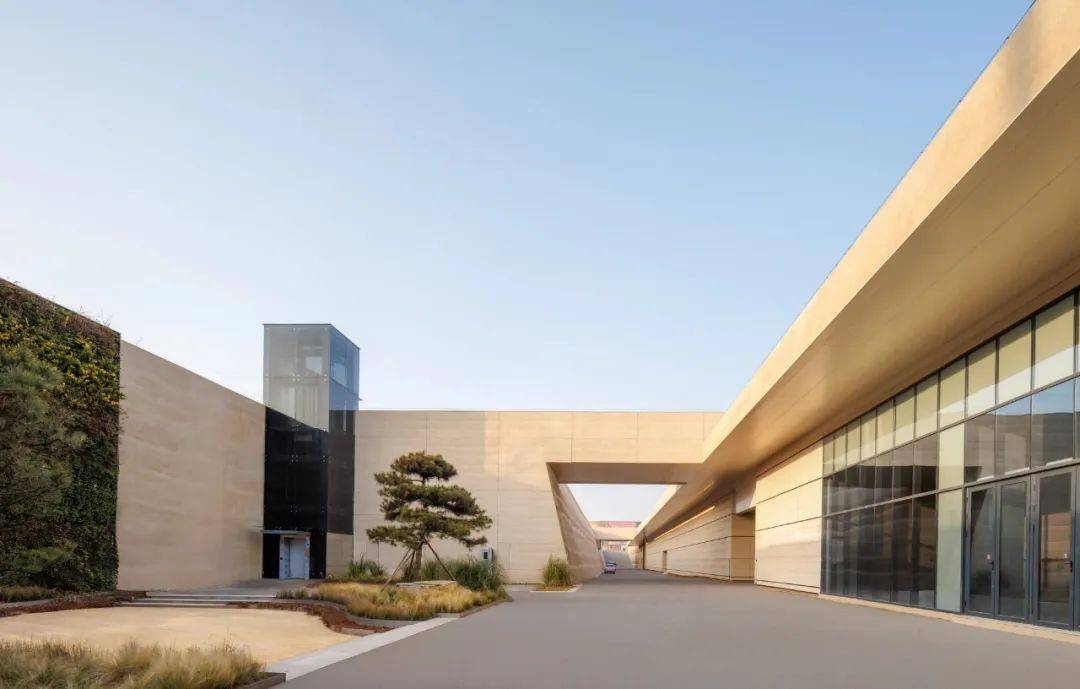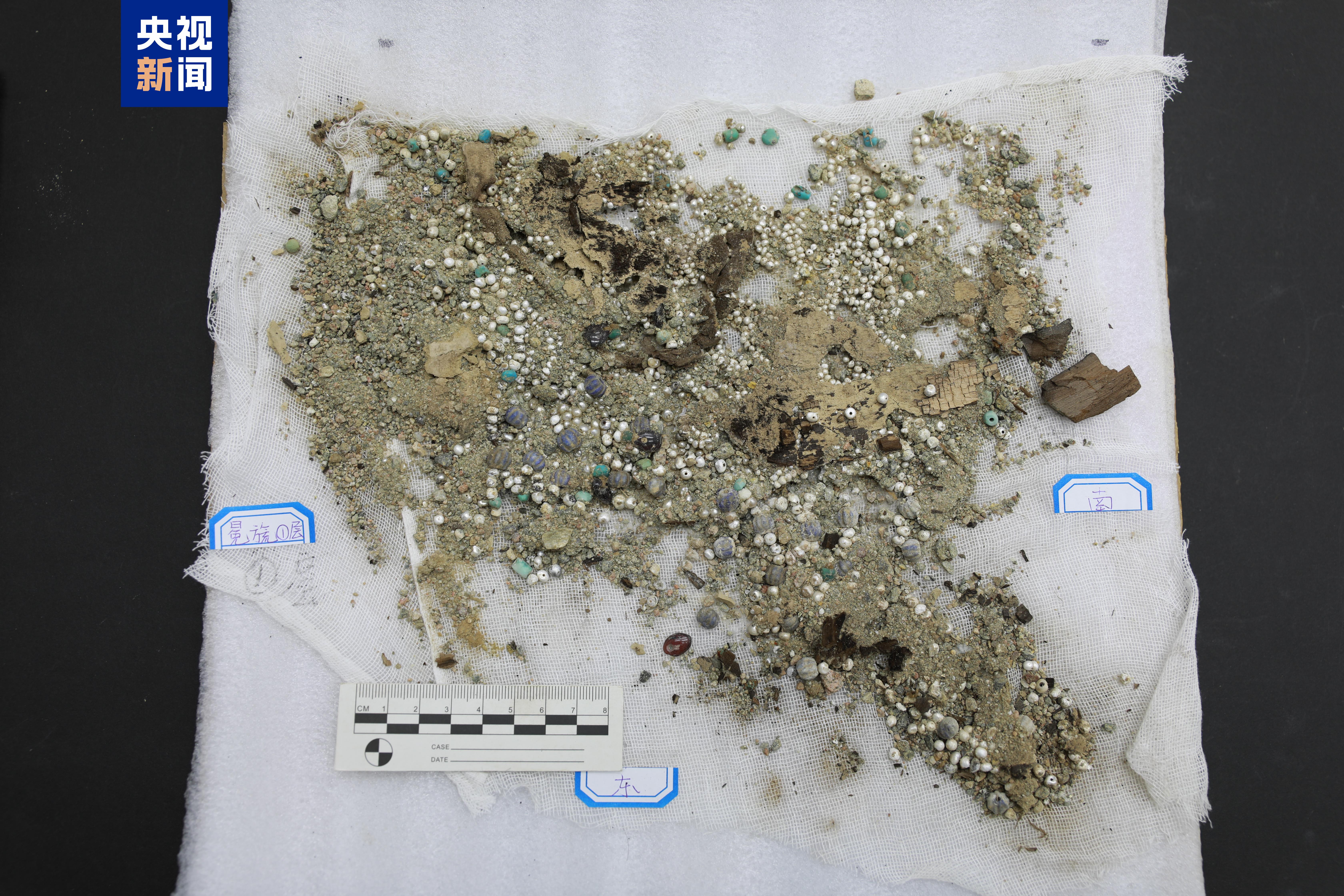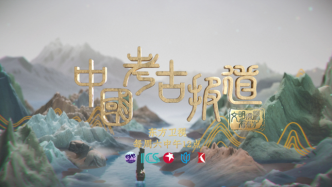
This may be unimaginable by archaeologists in the 1970s and 1980s. Now, online and offline, the general public can come "face to face" with archaeology through a variety of communication methods. Hangzhou in Zhejiang, Meishan in Sichuan, Anyang in Henan and other places are recruiting archaeological volunteers from the society, and many young people have signed up enthusiastically. From museums to archaeological sites, behind the “archaeological craze” is the gradually soaring “Chinese traditional culture craze.”
Even in the heat, you need to think calmly. In fact, archeology has certain difficulties for both professionals and non-professionals, whether in the study of physical materials or the interpretation of documentary materials. The web is imaginative and sometimes unrealistic. Timely, effective and accurate communication is the most important part of the connection.
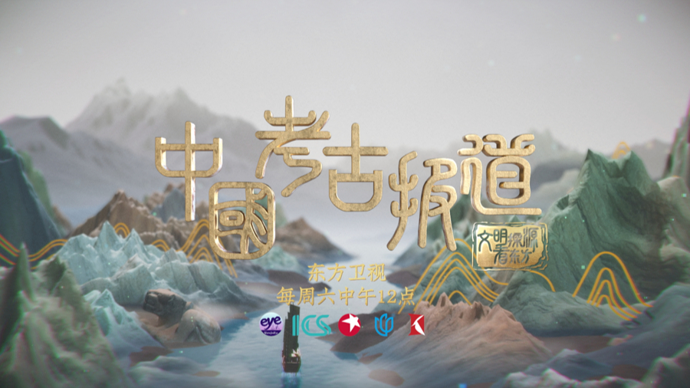
Screenshot of "Chinese Archeology Report"
At the beginning of 2024, following the large-scale documentary series "Why China", Shanghai Radio and Television launched the country's first archaeological and cultural media integrated news column "Chinese Archeology Report". Each episode of the program is about 30 minutes and is broadcast on Dragon TV at 12 noon every Saturday. By going deep into archaeological sites and talking to archaeologists, we explore ancient China from multiple angles, striving to see people through things, discuss history with things, and inspire thinking with history.
After the program was broadcast, the audience left enthusiastic messages: "I have been waiting for a long time, and finally there is a special news program on archeology! I hope it can bring us a deeper understanding of the long history of Chinese civilization."
Recently, from the perspective of mainstream media communication, reporters from The Paper interviewed the team behind the program on topics such as the production of archaeological programs in recent years and the changes in concepts of creators and their audiences.
On September 28, 2021, Dragon TV, Kankan News and Bilibili jointly launched a special program to commemorate the centenary of archeology "Civilization Exploring the East: Why China". This large-scale integrated media live broadcast is carried out in the form of reporter visits and news investigations , leading viewers and netizens into 10 archaeological sites across the country full of stories, exploring cultural relics and treasures that are "used without realizing it every day", and collecting the time codes of Chinese civilization on the vast land.
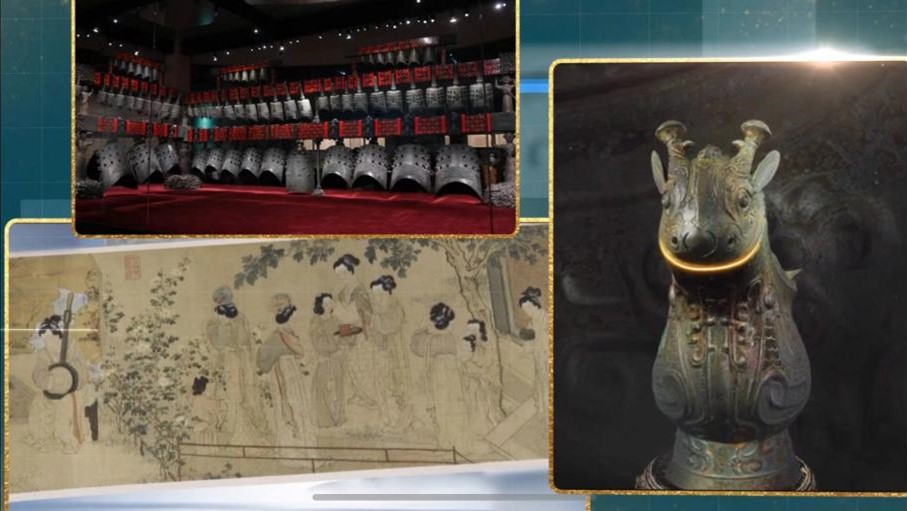
Screenshot of "Chinese Archeology Report"
Cao Xu, chief editor of the Media Center, said bluntly that the core and starting point of the planning of "Chinese Archeology Report" was to serve as an important part of the Shanghai Radio and Television Station's communication IP of "Exploring the Origin of Civilization and Seeing the East".
She emphasized: "If the large-scale documentary "Why China" that just aired is a major research result based on the 'Chinese Civilization Discovery Project' and 'Archaeology of China', it systematically traces the foundation, origin, formation and early days of Chinese civilization. The development process provides an overall and clear narrative of the formation and development of Chinese civilization over the past ten thousand years; then "Chinese Archeology Report" is not only a timely and authoritative archaeological news release platform, but also strives to provide vivid and vivid news Vocabulary, combined with hot topics, to refine and display the historical context of Chinese civilization in a simple and profound way.”
Follow the "big archeology" idea
As a news magazine-like integrated media column, "Chinese Archeology Report" covers multiple sections: "Archaeology News" combs important information about archeology and cultural heritage; "Archaeology Chronicle" interviews and takes photos of the latest archaeological discoveries; "Lianmai Ancient Exploration" focuses on various places Museum, dialogue with on-site experts; the "Hot Search List" relies on big data analysis to use professional vocabulary to analyze hot search topics in cultural museums, etc.
"Without the idea of 'big archaeology', details can only be 'small, scattered and fragmented'. Media communication that follows the idea of 'big archaeology' must also discuss history based on things and avoid the accumulation of small, scattered and fragmented information." Rong Cao Xu, editor-in-chief of the Media Center, said that this was a suggestion and request put forward by experts and leaders during the program planning stage.
Nowadays, museums all over the country are vying to be "conspicuous bags". The treasures of the museum are being marketed in fancy ways. Cultural relics from outside the circle are frequently searched for. Thematic exhibitions and special exhibitions are showing their magic. New archaeological discoveries in "Sanxingdui"... The archaeological barrier has been Open gradually.
"These phenomena are more of an accidental event, and the public has a curiosity-seeking mentality. From the perspective of media people, how to connect the content that everyone is interested in with the archeology itself and the cultural museum itself in a more effective and accurate way, perhaps this is It is the responsibility of the program." Xing Wei, a program producer who has been involved in cultural and cultural programs for many years, believes that if a program is to be recognized by the audience, it must be accumulated and accumulated.
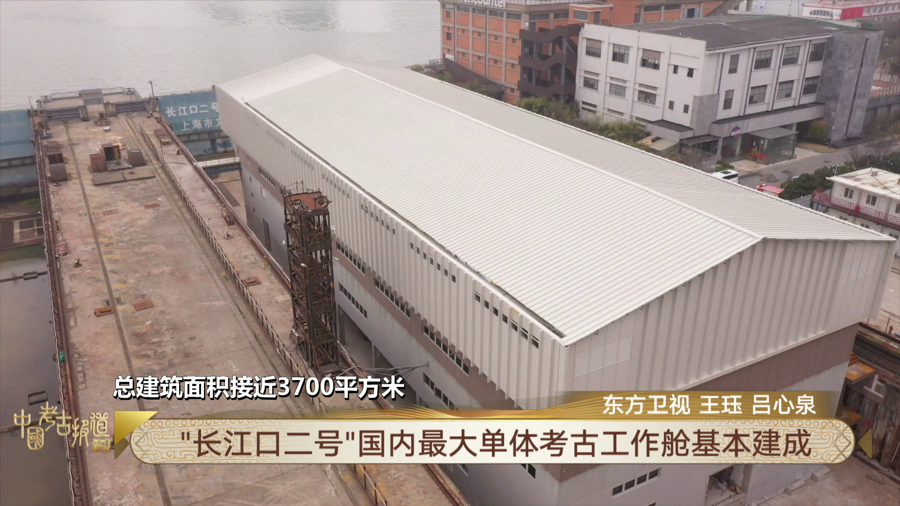
Screenshot of "Chinese Archeology Report"
The first episode of the program follows and reports on the preliminary shortlisted projects for the "Top Ten New Archaeological Discoveries in the Country in 2023", and takes the audience into the archaeological work cabin of the "Yangtze Estuary No. 2" ancient ship in Shanghai for a sneak peek.
Xing Wei said that the program will also visit other latest archaeological sites with very significant results in the future, and interpret and elaborate on important archaeological discoveries.
"We will also do key planning for underwater archaeology. On the one hand, we have been following up on the archeology and protection work of the 'Yangtze Estuary No. 2 Ancient Ship'. The elaboration of this time capsule, as well as the archaeological construction and tour at the same time, this comparison Cutting-edge cases that combine conservation and scientific research are very worthy of attention. On the other hand, shipwrecks and a large number of porcelain have also been discovered on the bottom of the South China Sea, including off the coast of Fujian. We will also include them in the planning of underwater archeology. At the same time, , we will also plan some topics in museums, such as under the theme of building a world-class museum, how can Chinese museums achieve differentiated development?"
Interpret a topic with ease
Lei Xiaoxue, the chief host of the Fusion Media Center, often appears at the press conferences of major important events. Previously, she did a live broadcast on "Civilization Exploring the East" for two years and had a lot of contact with cultural institutions. Currently, she is still in Shanghai I am currently studying for a Ph.D. in Archeology at the university, with a focus on cultural heritage dissemination. She can be called a hexagon warrior. Whether it is major news events or archaeological and cultural programs, she often personally participates in the editing, editing and broadcasting. For her, the subjects she studied and the practical projects coincided perfectly, which was very lucky.
"I came to China Knowledge Network to do every issue of "Chinese Archeology Report". Regarding this program, Lei Xiaoxue did not dare to slack off at all. "Every word you say must be based on evidence."
When doing the "Lianmai Exploration of Ancients" session, each topic is an academic study. Ask the teacher, contact relevant experts in the archeology and cultural circles, and then break down the topic. For Lei Xiaoxue, it is not difficult to interpret a topic and quote scriptures, but it is a huge test to do it with ease.
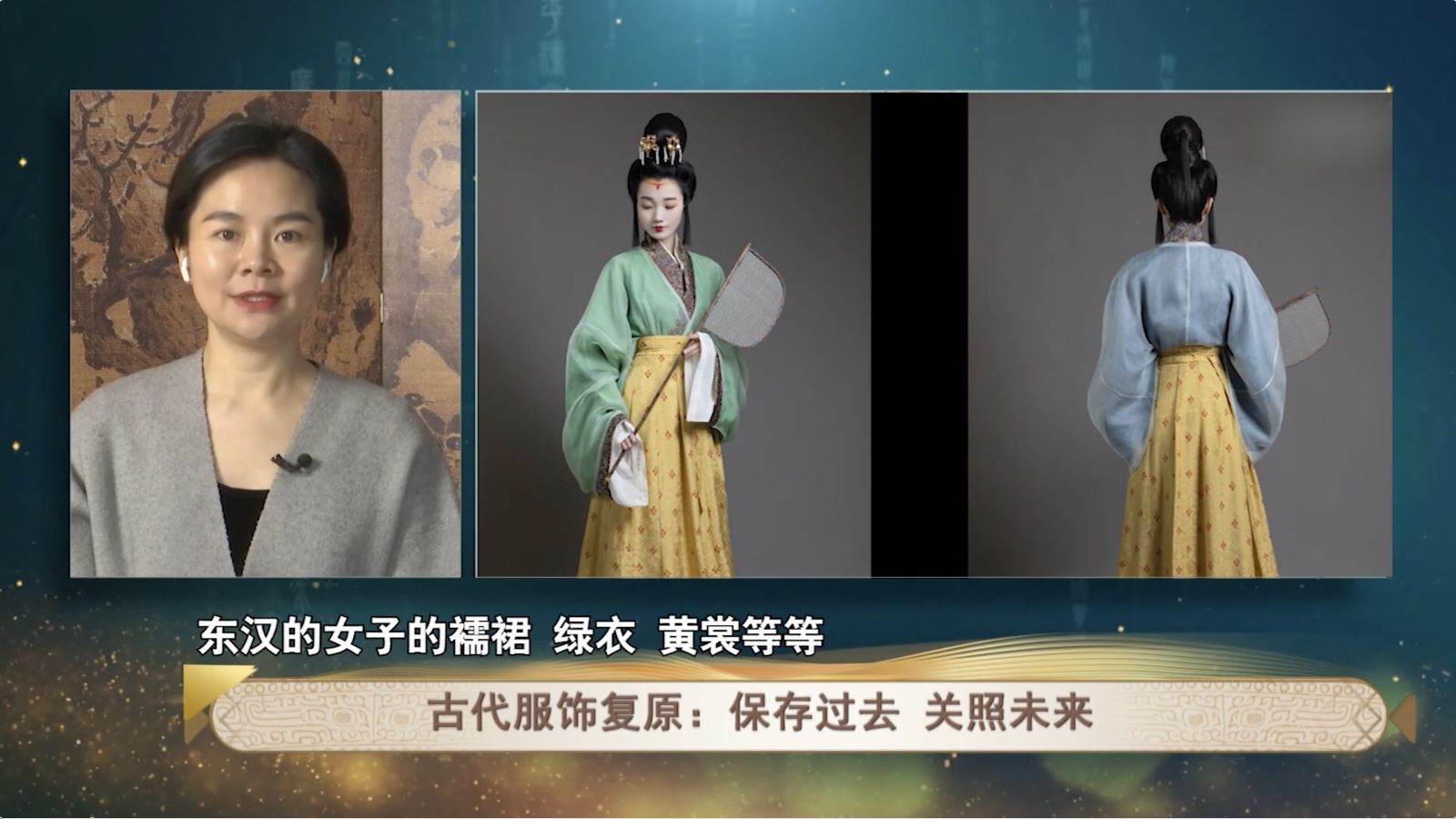
Screenshot of "Chinese Archeology Report"
"There is a program that talks about the archeology of clothing from the documentary "Why China". How did the hats of the Han Dynasty evolve step by step? The origin of the horse-faced skirt? How to interpret the phenomenon of the horse-faced skirt? Each of the small subjects is It’s a specialized subject.”
Lei Xiaoxue gave another example: "For example, the original word for 'single' (sound) for plain gauze singles in Mawangdui cannot be typed. This word no longer exists. We need to ask experts for advice on the evolution of Tongjie in Chinese characters, including today's According to the common usage and academic circles, it is finally determined that "single" can be used instead, but you can't do it out of thin air, you must verify it step by step. Not to mention a word like this, let alone a large number of archaeological pictures and documents, including Explanation of subjects. In addition to looking at some cultural relics and telling good stories, we also need to talk about things that the public doesn’t know behind the scenes. For example, the Yin Ruins is not a single museum, but a complete archaeological system. What are the problems faced by this system now?"
Anyone who works in the news knows that "live broadcast" has very high requirements for copywriting and presentation of content. A lot of content may be prepared in one direction, but only one-third is presented. Due to time control, experts are also required to be able to refine core knowledge points.
"Different from variety shows, which are knowledge-based programs for the public, archeology is not about digging for treasures or appraising them. It has the responsibility of enriching and nourishing the social and cultural environment."
From an expert's perspective, Associate Professor Zhou Fang of the Academy of Fine Arts of Shanghai University said when talking about the program on ancient costumes that she participated in: "We comprehensively presented the research and restoration practices of ancient costumes. When talking about the issue of men wearing crowns in the Han Dynasty, we need to Help the program team clarify the big difference between men's crowns in the Western Han Dynasty and the Eastern Han Dynasty, the compatibility of crowns, scarves, and hairstyles, the change process from the Western Han Dynasty to the Eastern Han Dynasty, how to make the pictures of cultural relics more consistent with the narrative content, etc. There was more communication.”
She believes that there have been few serious news programs that have paid attention to ancient material culture and made professional in-depth interpretations. This program uses a live online conversation between the host and experts, combines social hot spots, and provides a more in-depth analysis of one topic in each issue. The Q&A session is designed to be both professional and cater to the expectations of fans. It maintains academic and general knowledge and requires a lot of preliminary investigation and preparation work. The final editing and proofreading also requires high standards, which is very important for journalists. There are indeed big challenges.
Breaking boundaries = Seeing people through things + activating memories
According to Lei Xiaoxue, chief host of the Fusion Media Center, there has always been a disconnect between archeology, cultural heritage and communication, and there is an urgent need to bridge the gap between the two disciplines.
"The so-called separation is called different agendas in terms of disciplines. Archeology is more cautious and must reach an academic conclusion until the end. Even this conclusion will be overturned with the emergence of new materials. Therefore, the agenda of archeology is to set After all, the agenda of communication studies is put first. Before an issue comes out, we must quickly trigger public discussion."
As a mainstream media platform, the requirements are even more stringent before the report is published. "It cannot be ambiguous" and "professional terms must be expressed in a popular way." At the same time, on top of cultural relics, communication must go further, and the issues derived from cultural relics must be deeper.
For example, how were the etiquette systems of the Shang Dynasty reflected?
How to expand the international influence of Oracle's communication system?
What we are familiar with are the dragons of the Central Plains, the earliest stone pile dragons in the Liaohe River Basin, and what are the dragons of the ancient Shu civilization in Sanxingdui?
How can the exploration of the origins of Chinese civilization gain greater recognition and attention from the international academic community?
…
The "Lianmai Exploring Ancient" section combines hot topics.
For example, in the first episode, experts from Lianmai Shanghai Museum, Shanxi Museum, and Sichuan Sanxingdui Museum talked about their respective Year of the Dragon special exhibitions.

Screenshot of "Chinese Archeology Report"
When interpreting the winged bronze dragon unearthed at Sanxingdui, experts focused on comparing its distinctive regional characteristics and its highly similar shape to dragons in the Central Plains. Most audiences will naturally associate it with the cultural identity of "Descendants of the Dragon", and interested people will also use this to confirm the evolution of Chinese civilization from a "sky full of stars" to "diversity and unity" in history books.
Regarding the popular expression of professional language, the program producer Xing Wei also put forward requirements for the team, which must extract points that ordinary people can resonate with from the research of experts. For example, the "college student" and "leave request note" extracted from the "Prince's Diary" in the new Yin Xu Museum, everyone will understand it as soon as they hear it.
He gave another example from another show. Some of the folk bamboo slips unearthed in Hunan contain something similar to today's business cards, which were called Mingthorn at that time.
"When we interpret such details, they form a good connection." Xing Wei said, "At the same time, many miniature ceramic models were unearthed in the tombs, including houses, yards, barns, and small animals such as dogs and sheep. Animals, etc., are made lifelike, a bit like building blocks. The miniature model restores the living conditions of the ancients at that time, allowing us to truly see that in a small county in Hunan during the Soochow period of the Three Kingdoms, there were elevated architectural forms like stilted buildings. This kind of The presentation is more vivid than the words simply recorded on bamboo slips, and the details are more prominent."
Xing Wei sincerely lamented, "We always think that modern life is very developed and the ancients were very backward. In fact, looking back at different stages of history, the imagination of the Chinese people is similar, but the level of productivity development at different stages is different, and the living conditions and interests of life are different. Common."

Screenshot of "Chinese Archeology Report"
How can the program be "down to earth"? Cao Xu, editor-in-chief of the Fusion Media Center, summarized two key words:
A key word is "seeing through things and seeing people". In this episode of the New Yin Xu Museum, the guest tells the story of the "Prince's Diary" of the Shang Dynasty, which is composed of more than a hundred oracle bones. The reason why it is attractive is because of this mysterious "prince" and his parents, King Wuding and Queen of the Shang Dynasty. The woman stood vividly in front of people's eyes.
Another key word is "activating memory." Although archeology has a high professional threshold, just as good science and technology reporting is lively and interesting, good archeology reporting should not be difficult or showy. Everyone has experienced many years of history from childhood to college. There is no shortage of historical themes in reading books, watching TV series and watching videos. In recent years, the craze for cultural museums has attracted more people to visit museums. It can be said that historical elements surround them and are hidden in their memories.
On the one hand, archeology needs to awaken the interest of ordinary people in a timely manner to understand history, and on the other hand, every archaeological detail must be treated rigorously. How to resolve the contradiction between this and the speed of communication?
Cao Xu believes that the more thorough the underlying details are studied, the more profound the macro narrative can be. There is no contradiction between the two, and the same is true for media communication.
"As experts say, without large-scale archaeological ideas, it is difficult to extract the continuous keys of Chinese civilization; without small details, large-scale archeology can only be vague and vague. The industry highly recommends the Liangzhu civilization narrative be included in textbooks, capitals, palaces, dams, Jade ritual utensils... Are there rice fields around the capital? How many kilograms of rice are there in the city? How many people can feed it for how many years? It radiates the social organizational capabilities of the surrounding areas and the spread of faith. Liangzhu jade congs are spread over 2,000 square kilometers in the surrounding area. They have been found on the west bank of Taihu Lake. In the seventh-grade history textbook, Liangzhu is basically explained in one page," she said.
Understand the context of Chinese culture from a deep perspective
Talking about the changes in the concept of archaeological cultural heritage communication, Zhou Fang, associate professor at Shanghai University School of Fine Arts, feels that the changes in recent years are visible to the naked eye. "The direction of communication gradually changes from documentary and popular science to story-based and situational."
In her view, today's presentation of ancient cultural relics has included more technologies, and the display has become more holographic and three-dimensional, making the viewing experience better and better for the audience. In the future, there may be a cultural relic movie centered around a cultural relic, telling the life course of the artifact. This is very interesting and worth looking forward to.
During the interview, the main creators said that most people don’t know that Shanghai’s scientific and technological archaeological technology has entered the international forefront. When the program team cooperated with a university, they learned that they were working on a digital restoration archaeological project, using DNA data from the bones of unearthed historical figures to restore the details of the parties’ lives and historical doubts. "For example, after extracting a jar salvaged from the Yangtze Estuary No. 2 shipwreck, it was found that some data can restore many details of the lives of the crew members who used the jar," said program producer Xing Wei.
In this regard, the host Lei Xiaoxue also added: "Shanghai is not rich in archaeological resources. Shanghai's advantages are its openness to all rivers and its international perspective. It can serve as an excellent academic resource that brings together people from all over the country and even the world, thereby introducing China to the world. , and also give China a window to see the world.”
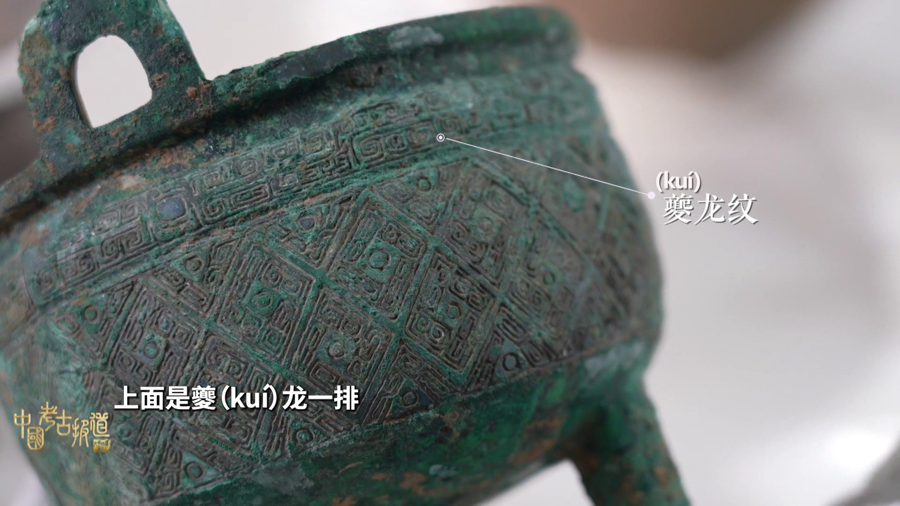
Screenshot of "Chinese Archeology Report"
The trend of "archaeology craze" has also forced the ecological development of the archaeological circle. In recent years, major museums have become as involved in involution as the parents of Chicken Baby.
Lei Xiaoxue, who once worked at Sichuan TV station, lamented, “In the early years, Sanxingdui received little attention, and people in Chengdu didn’t pay much attention to it. In recent years, the Sanxingdui Museum has done very well. From interviews, you will find that they The overall expressive thinking ability and communication awareness have been greatly enhanced. Everyone has jumped out of their comfort zone. Interviews are actually a process of mutual abuse. The integration of the communication world and the archaeological and cultural circles was achieved during the shooting. Everyone went in both directions and helped each other. , this is a very big change that I feel.”
The battle between big and small screens has become more prominent. It can attract viewers who watch short-form videos back to the TV to watch a news program. The difficulties faced by mainstream media people are not small. It is indeed imperative to change concepts and innovate content.
Lei Xiaoxue believes that the pain of media integration and transformation is still continuing. To make this program, first of all, media people must have feelings. In the early stage, the first thing to ensure is that "Chinese Archeology Report" can be broadcast with high quality. Secondly, the advantageous resources in the program must be formed, rather than a simple second creation.
The Shanghai Radio and Television Station’s Integrated Media Center’s original series of short video programs “The Great Treasure·Treasure Exploring Shanghai” is a good attempt. The two-season program uses the form of a "micro-documentary" to tell an in-depth story about the "past and present life" of the national treasures collected by the Shanghai Museum.
Producer Xing Wei said: "For the 50 major exhibits at Shanghai Expo, each exhibit has a short story of 3 to 5 minutes, and the dissemination effect is also quite good. We will extend this series next, and More museums are cooperating to tell more vivid and vivid stories about the museum’s hidden treasures or national treasures, and at the same time, we are also presenting some of the latest research results in our storytelling voice.”
In Xing Wei's view, the most obvious thing in recent years is "the changes in audience demand that have prompted changes in our productivity."
In the era of rapid economic development and globalization, people's demand for history and traditional culture is even stronger, especially among young people. Xing Wei believes, "Everyone is more urgently looking for identity and value recognition. We do a weekly archeology blog column, respecting the ancient but not retrogressive. We tell the story of ancient China well, and we also want everyone to see modern China and understand future China. .”
When doing archeology and cultural programs, Lei Xiaoxue still remembers what he once said when interviewing the director of "Why China"? "Why do we have to do such difficult things? Because in the context of cultural self-confidence, it is not just about giving people the attention of archaeological internet celebrities, but also about understanding the context of Chinese culture from a deep level after the fever subsides. . I think as a media person, if you can do a little more in this area and go a little deeper, you will be very proud of it."
Archeology's move from the ivory tower to the public is inseparable from the painful and thought-provoking changes in the concepts of archaeological cultural exchange and reporting over the years. Today, when traffic is king, Xing Weihe and his team members know that they must "go with the flow."
"In the past, on the one hand, more emphasis was placed on knowledge-based science popularization, and on the other hand, archeology was talked about from a historical perspective, creating some suspense, with a lot of fictional content. Nowadays, it is more like a kind of news that comes from the topical nature of the news. Diversified presentation." Xing Wei said, "Our program should be more like an excellent translator, translating historical language into today's language, translating historical stories into today's stories, through the blessing of imaging technology and big data, Dig out the bright spots in history with your heart.”

